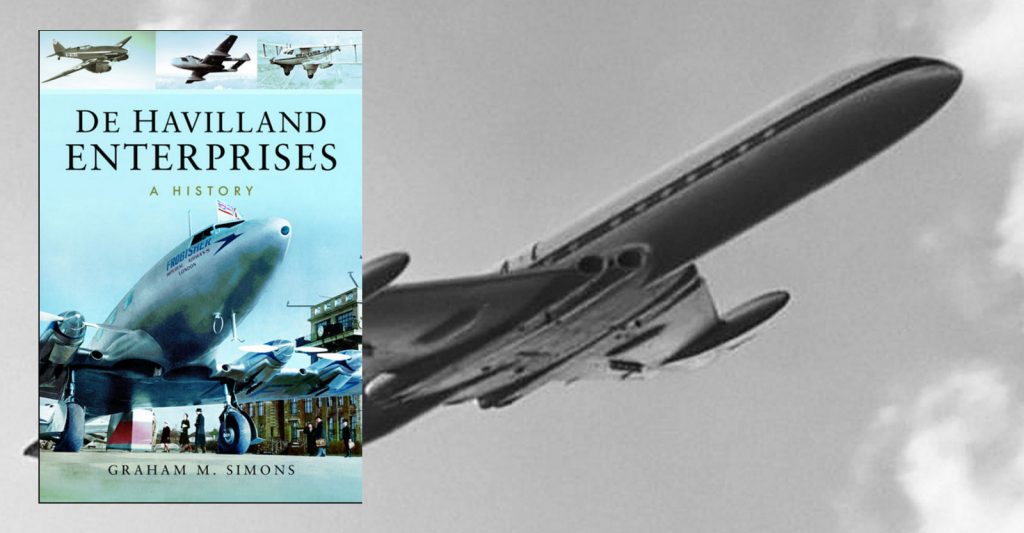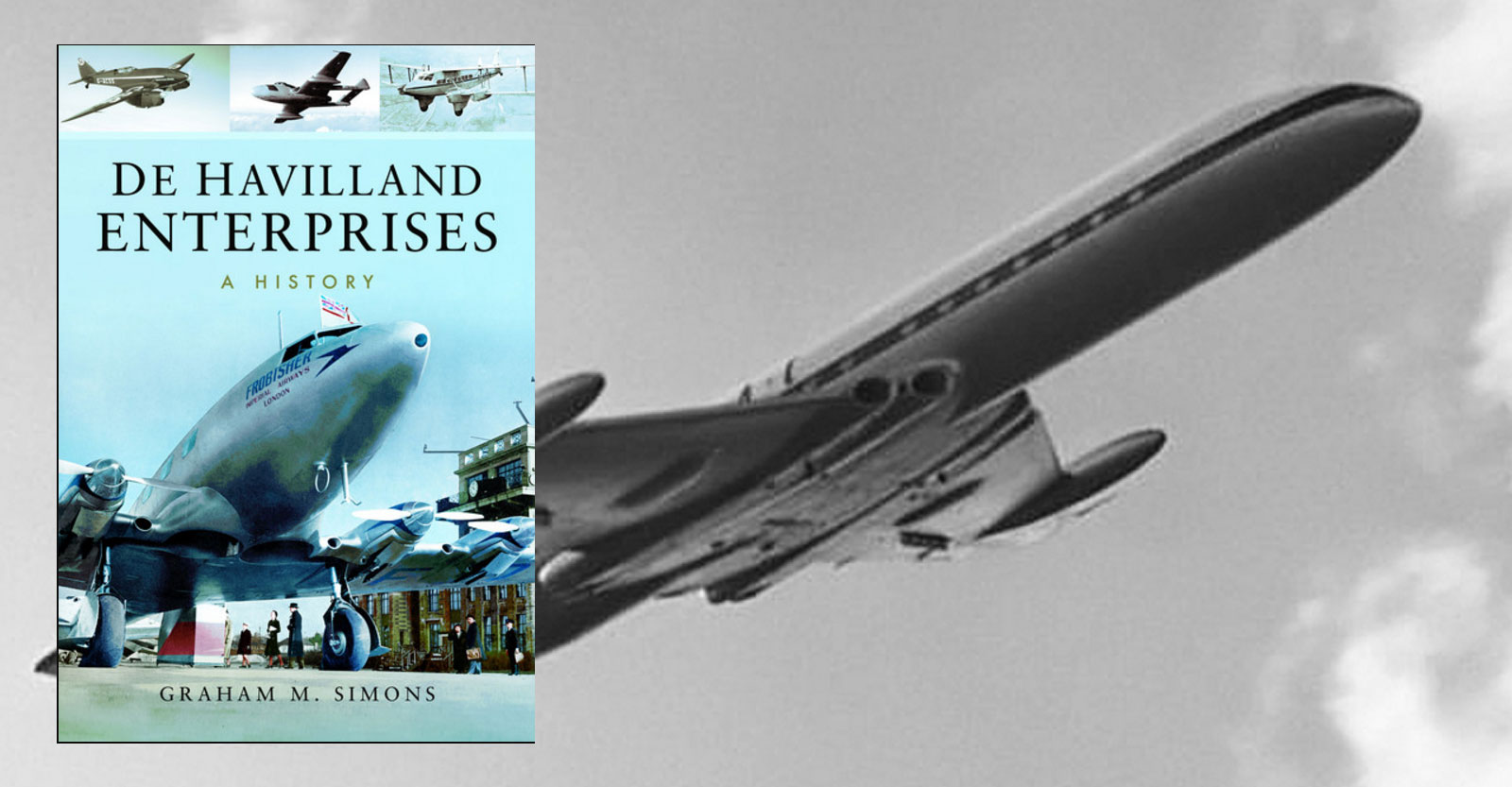
The achievements of Geoffrey de Havilland will forever be etched in the history of aircraft development, and particularly the industry which flourish and grew in the United Kingdom. It is more than fitting that a book charting the many eponymous aircraft to have come from his stable be written – a book now available from author Graham M. Simons, entitled De Haviland Enterprises – A History.
Captain Geoffrey de Havilland was born in 1882 and initially sought a career in automotive design. However, he found himself and colleagues working on pioneering aircraft designs in the earliest days of flight. The De Havilland No. 1 biplane flew in 1909. He ended up working with the Aircraft Manufacturing Company (Airco), developing fighter and bomber aircraft for the World War I effort.
The first civilian aircraft type developed by de Havilland was the DH.16 in 1919. Only six were built, however the type allowed KLM Royal Dutch Airlines to commence scheduled services using a leased example. It flew regularly between Amsterdam and Croydon (then London’s airport).
In September 1920 he founded the De Havilland Aircraft Company and continued developing aircraft to serve a multitude of different roles. All would continue in the DH. numbering sequence which became so famous and identified the work of the talented pioneer.
One of the most substantial series of aircraft built by de Havilland were the Moths. Most will know the DH.82 Tiger Moth – a biplane which would teach thousands of pilots to fly and assist during wartime, with over 8,800 built. However there were many different variants of Moth aircraft, each fulfilling a different role, and each with a different measure of success.
[de Havilland Moths: A Family Album – Colour Photographic Book by Destinworld Publishing]
Transport of passengers by air became of a focus of de Havilland in later years. The first truly successful transport type was the DH.89 Dragon Rapide. A biplane design, it could carry six passengers and mail in comfort over 500 miles. Flying from de Havilland’s Hatfield base in 1934, over 700 were built.
The DH.104 Dove (also classified Devon in military service) was another popular de Havilland transport type, making its debut in 1945. It would stay in production into the 1960s, being superseded by the larger, faster, yet less successful four-engine DH.114 Heron.
One of the greatest achievements of de Havillands is their jet aircraft. As well as numerous military types, the company was responsible for the world’s first jet airliners, the DH.106 Comet 1, which set the bar for America’s manufacturer’s and truly put Britain in the lead for a time. Due to unfortunate crashes the Comet fell behind, and later developments could not compete with the Boeing 707 and Douglas DC-8.
The DH.121 was another jet aircraft design, to be named the Trident. It featured revolutionary auto-land technology, but would be built under the Hawker Siddeley company, which had absorbed de Havilland.
 This book is a a substantial overview of every type developed by Geoffrey de Havilland and his companies, including sections on aircraft built by the de Havilland Canada offshoot. Each entry includes diagrams, technical information, archive photographs and well-researched and interesting information.
This book is a a substantial overview of every type developed by Geoffrey de Havilland and his companies, including sections on aircraft built by the de Havilland Canada offshoot. Each entry includes diagrams, technical information, archive photographs and well-researched and interesting information.
Naturally with such an all-encompassing and pioneering developer the book is not wholly about civil aircraft, but a mixture of war, transport and experimental aircraft.
Graham Simons has produced a fascinating read, available now in hardback from Pen & Sword, RRP £25.




